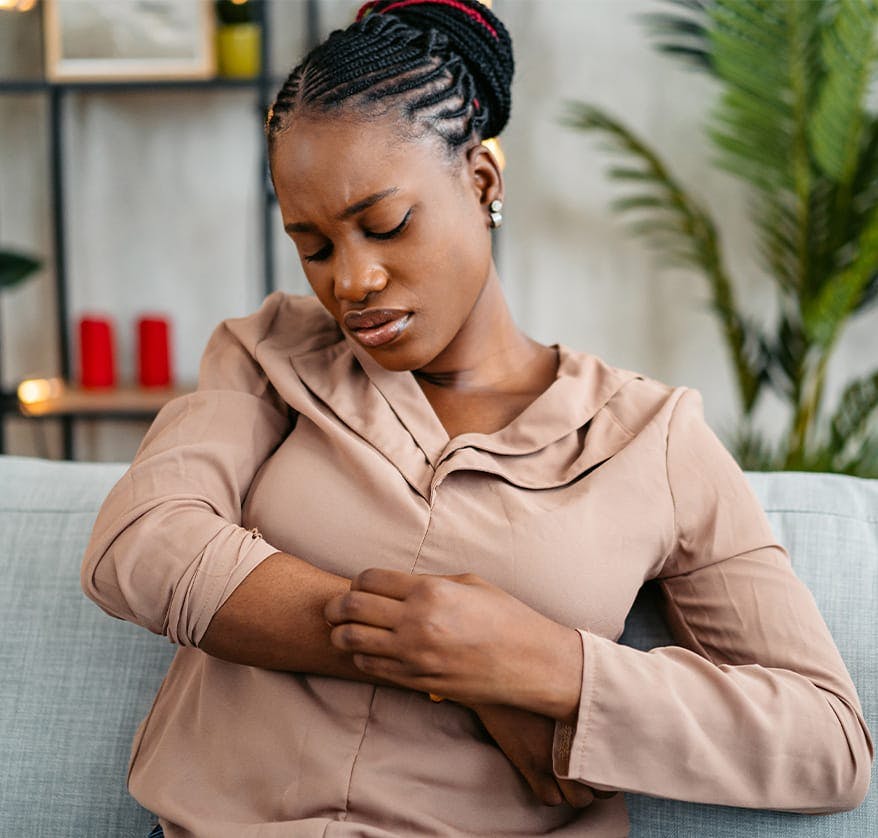Poison sumac, poison ivy, and poison oak all contain an oil called urushiol. If this oil penetrates the skin, most develop an itchy rash due to an allergic reaction. The rash appears over time and usually not immediately after coming in contact with the oil. In fact, the skin reaction may not appear for 12-21 days after the first time you’ve come in contact with these plants. If you have had an allergic skin reaction in the past, the rash will likely appear 12-72 hours after coming into contact with the plants.
How a Professional Dermatologist Can Help
A poison ivy rash, while usually not dangerous, can be extremely uncomfortable. A dermatologist can provide you with treatment tips, creams, and medications to help reduce itchiness and pain. Use the buttons below to find a clinician or location near you that treats poison ivy.




